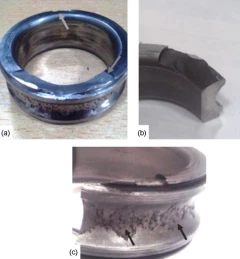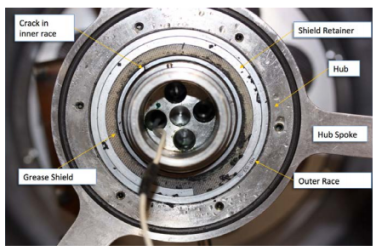 An article published in « Case Studies in Engineering Failure Analysis » .
An article published in « Case Studies in Engineering Failure Analysis » .
A bearing, can fail prematurely due to a variety of factors like wrong choice of a design for the application, lack of or inadequate lubrication, impact loads, vibrations, environmental factors like operating temperature, corrosive media, moisture, dirt or handling abuse during transport, mounting, reinstallation and servicing.
Two case studies are presented here wherein abusive handling likely caused premature fatigue failure of ball bearings.


 This article documents the metallurgical evaluation of a rolling element bearing that failed due to electrical discharge damage. This rolling element bearing was used in a helicopter turbine engine that failed in-flight, resulting in a hard landing of the helicopter. Optical and electron microscopy as well as energy dispersive spectroscopy were used to evaluate the bearing. Pitting and material transfer on the external bearing races bearing and mating surfaces revealed that the electrical discharge damage occurred while the engine’s components were not rotating.
This article documents the metallurgical evaluation of a rolling element bearing that failed due to electrical discharge damage. This rolling element bearing was used in a helicopter turbine engine that failed in-flight, resulting in a hard landing of the helicopter. Optical and electron microscopy as well as energy dispersive spectroscopy were used to evaluate the bearing. Pitting and material transfer on the external bearing races bearing and mating surfaces revealed that the electrical discharge damage occurred while the engine’s components were not rotating.
